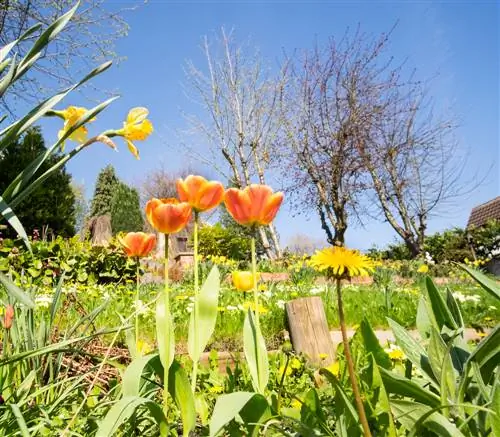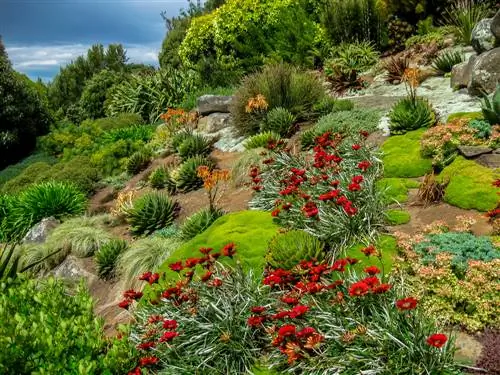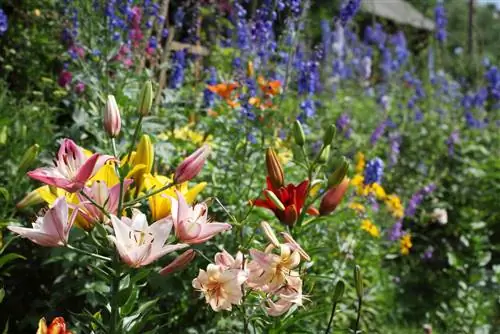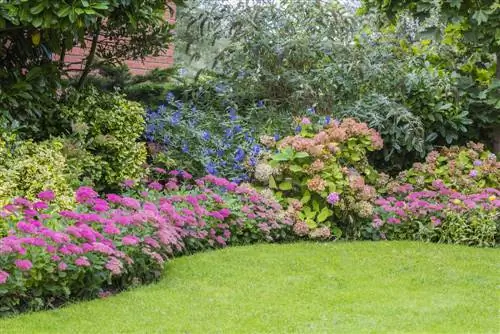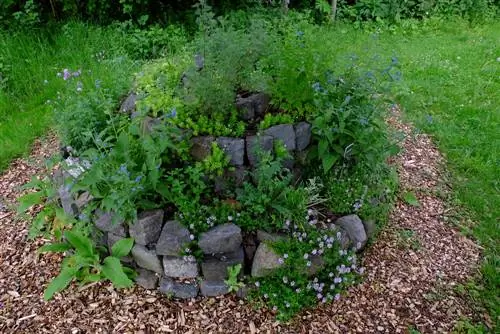- Author admin [email protected].
- Public 2023-12-16 16:46.
- Last modified 2025-01-23 11:21.
Gardens can be sloping, not only in mountainous areas. However, a garden on a slope does not have to remain unused or necessarily difficult to plant. With a few tricks you can conjure up a lush flowering perennial landscape here too.
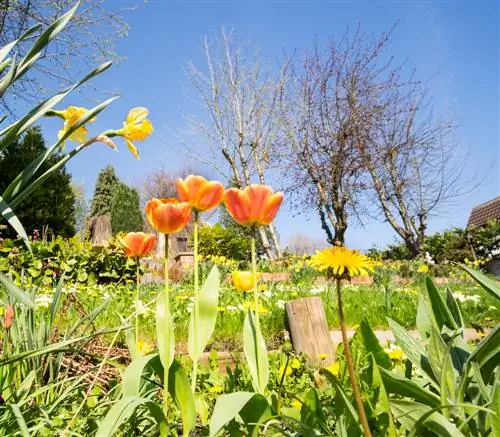
How to create a flower bed on a slope?
For a sloped flower bed, it is recommended to use embankment mats as erosion protection or to create retaining walls and raised beds for fastening. It is important to select suitable plants that correspond to the different light and humidity conditions on the slope.
Planting flowers correctly on a slope
Of course, a flower bed can also be created on a slope. You don't even have to straighten the slope; instead, you simply fortify it or create ground-level areas using retaining walls or raised beds. Ground-covering perennials are particularly suitable for planting on slopes, and they also protect the soil from erosion.
Secure with embankment mats
The main problem when planting sloped beds is securing the perennials. As long as these have not yet grown firmly, they need support. So-called erosion protection mats (€98.00 at Amazon) secure sloped beds very well. These are protective mats with coarse meshes that are usually made from jute or another organic material. You anchor the mats firmly in the ground with hooks and cut them crosswise where the perennials are to be planted. Some models have spacious plant pockets into which the root balls can be inserted. The mats rot within a few years and serve as fertilizer for the perennials.
Retaining walls and raised beds
However, creating terraces on slopes using retaining walls is much more complex. Instead of these, you can also use sturdy raised beds made of stone, which can be filled with standard soil and converted into a flower bed.
The right plants for the sloped bed
The living conditions on slopes are very difficult for plants. On the one hand, there is the drought problem, because the plants growing higher up the mountain often do not receive enough water - instead it immediately flows into the valley. Here, in turn, the perennials can be too moist because all the moisture collects at this point. The same applies to the light available: further up the slope it is often very sunny and warm, while the lower areas are darker. This is what you need to think about when choosing perennials for the flower bed - drought-tolerant sun worshipers at the top, plants that have no problem with shade and moisture at the bottom.
Tip
Instead of an erosion protection mat, clay pots without bottoms, which are buried in the ground together with the perennials and anchor them firmly, provide stability.

